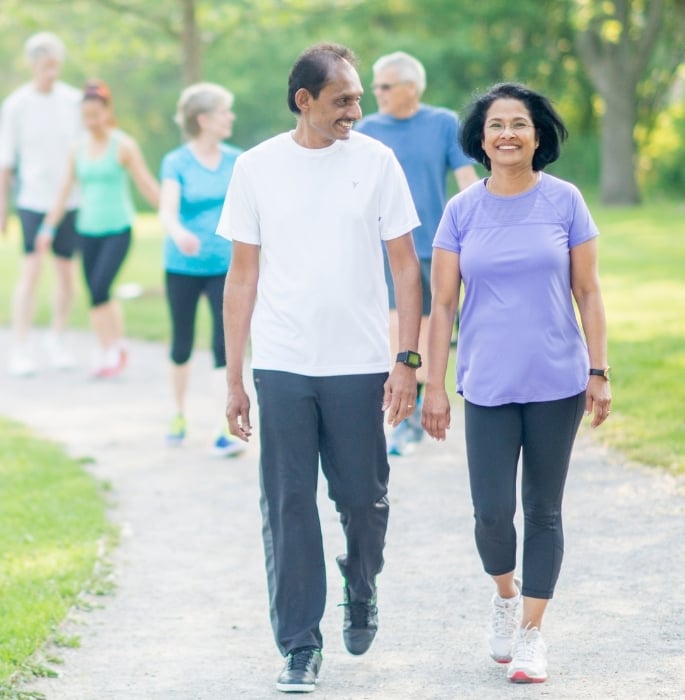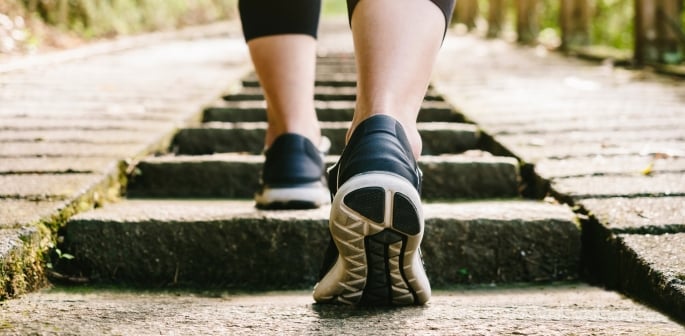This habit supports long-term metabolic health.
After enjoying a satisfying meal, many people instinctively settle into a chair or sofa to relax.
However, experts increasingly suggest that a short walk may be far more beneficial for your health.
Walking after eating supports digestion, balances blood sugar levels, and reduces bloating, common concerns in many South Asian households due to rich, carb-heavy meals and metabolic vulnerabilities.
Incorporating this simple habit could significantly improve overall well-being, particularly for those at higher risk of digestive discomfort and diabetes.
For South Asians who love dishes like biryani, parathas, or mithai, post-meal walks may be the secret to feeling lighter and healthier.
This small lifestyle change, deeply rooted in traditional wisdom, is now backed by modern science.
Improved Digestion
 Walking after eating stimulates your abdominal and intestinal muscles, aiding peristalsis, the rhythmic contraction that moves food through your digestive tract.
Walking after eating stimulates your abdominal and intestinal muscles, aiding peristalsis, the rhythmic contraction that moves food through your digestive tract.
This movement prevents sluggish digestion and helps reduce the sensation of heaviness or discomfort after large meals.
Even a 10-minute gentle walk encourages gastric emptying, meaning food passes through your stomach more efficiently.
As a result, nutrients are absorbed more effectively, and common post-meal issues such as bloating and indigestion can be significantly reduced.
For those who experience discomfort after spicy or oily dishes, a short stroll can make a noticeable difference.
Regularly walking after meals can transform digestion into a smoother, more comfortable process for your body.
Blood Sugar Control
 Managing blood sugar spikes is especially important in South Asian communities, where type 2 diabetes is a growing health concern.
Managing blood sugar spikes is especially important in South Asian communities, where type 2 diabetes is a growing health concern.
Walking after eating helps muscles absorb glucose directly from the bloodstream, minimising reliance on insulin.
This natural regulation prevents the sharp sugar surges often triggered by carbohydrate-rich foods like rice, roti, and desserts.
Research shows that even walking for two minutes after meals can improve blood sugar stability throughout the day.
Over time, this habit supports long-term metabolic health and reduces the risk of insulin resistance.
Incorporating post-meal walks into daily routines is an accessible way to counteract dietary risks and maintain a healthier balance.
Relief from Bloating and Gas
 Many South Asians experience bloating and gas due to diets high in lentils, dairy, and spices, which can slow down digestion.
Many South Asians experience bloating and gas due to diets high in lentils, dairy, and spices, which can slow down digestion.
Walking encourages the release of trapped gas by speeding up intestinal movement, easing discomfort naturally.
The popular “fart walk,” lasting between five and fifteen minutes, is praised for relieving bloating quickly and discreetly.
Movement during this time also boosts digestive enzyme production, helping food break down more efficiently.
Regular post-meal walks can make bloating less frequent and improve overall gut health.
For those who often feel uncomfortable after traditional dishes, this light activity offers noticeable relief without any medical intervention.
How and When to Walk
 Timing and pace play key roles in maximising the benefits of post-meal walking.
Timing and pace play key roles in maximising the benefits of post-meal walking.
Ideally, begin your stroll within ten to fifteen minutes after finishing your meal to activate digestion early.
A ten-minute gentle walk is sufficient for most individuals, though extending it can offer added advantages.
This routine fits seamlessly into family life and cultural practices, especially those inspired by “shatapawali”, the age-old Indian custom of walking 100 steps after meals.
Adopting this habit helps maintain energy, supports digestive health, and strengthens metabolism.
It’s a mindful practice that blends ancient wisdom with modern understanding of the body’s needs.
Choosing to walk after meals rather than sitting down is a small change with remarkable health rewards.
It promotes efficient digestion, helps stabilise blood sugar levels, and reduces bloating, issues that affect many South Asians due to dietary habits.
This simple act takes minimal effort but offers long-lasting benefits for gut and metabolic health.
By making post-meal walking part of your routine, you can enhance your well-being and feel lighter after eating.
It’s an easy, time-tested way to align everyday habits with healthier living.






























































